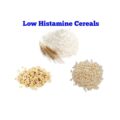Food intolerance and food allergy are quite confusing for most people as the food allergy symptoms can resemble the same as food intolerance. However, food allergy involves the immune system of the body whereas, food intolerance involves the digestive system and does not show serious allergic reactions. In addition, food intolerance does not come up on food allergy testing. Food intolerance is also a difficult subject to understand and is improperly understood by medical professionals as well. Certain substances inside the food can raise the severity and frequency of rashes, migraine headaches, stomach upset, and many more symptoms.
Both food allergy and intolerance have certain reactions or illnesses to the body. People suffering from these must avoid the particular food so that they have a healthy life. You can do the necessary treatment or can manage the condition after detecting it. But for knowing which allergies or intolerance you have, testing is required. For this, one can use the at-home food sensitivity kits available these days. You can opt for any one of these after thorough research, and if you are interested, you can learn more in this article. The sooner you will know about which condition you have, the better you can cope up with food allergies and food intolerances. But before anything, you must know the meaning of these conditions.
What is Food Allergy?
An allergy caused by food is just a response given by your immune system to certain food allergens. The immune system of the people produces specialized proteins known as antibodies which protect the body from potential threats by releasing chemicals to attack them. However, sometimes it mistakenly targets the food sources as a threat. The IgE antibody launches chemicals like histamine, which leads to showing allergy symptoms.
What is Food intolerance?
Food intolerance is also called food sensitivity which is a reaction in the digestive system to particular food substances. This condition does not have any relation to the immune system, and the reaction will not show immediately. Sometimes, it takes few days for a reaction to occur. There are many causes and types of food intolerance which contribute to illness in a person. The symptoms’ severity depends on the amount one consumes. People having food intolerance can eat a small amount of food without much problem.
Certain Differences between Food Intolerance and Food Allergy
- Food Allergy can be inherited:
Most of the time, when parents have certain allergic diseases, the offspring also inherit the allergic condition from them. If more family members are having an allergic reaction to a certain food, then there are chances that you may also have the condition. But food intolerance does not have much relation to genes and is also not inherited.
- Food Intolerance Occurs Due to Chemical Reaction:
Food intolerance happens due to chemical reactions in the gastrointestinal section. This occurs when people eat or drink something that does not go well with the body. It is associated with irritable bowel syndrome, chronic fatigue syndrome, and asthma.
- Immune response gives allergic reactions:
Food allergy is the reaction of the immune system inside the body to certain proteins. These proteins can also be in the form of house dust, foods, pollens, molds, or animal hair. All such proteins are called allergens. The allergy comes when the immune system recognizes certain harmless food substances as toxic.
- Differences in Symptoms:
Food allergies can sometimes cause life-threatening reactions whereas, and food intolerance causes much milder symptoms. It can be difficult sometimes to differentiate between food allergy and intolerance. However, there are certain differences in the symptoms that separate food allergy from intolerance and some of these are mentioned below.
Symptoms of Food Allergy
- Itching
- Runny nose
- Swelling of eyes or face
- Hives
- Abdominal cramps
- Vomiting
- Nausea
- Skin rash
Symptoms of Food Intolerance
- Tremor
- Nervousness
- Palpitations
- Sweating
- Diarrhea
- Migraine
- Skin burning sensations
- Tightness in face
- Breathing issues
- Allergic Reactions can be Life-Threatening:
A dangerous allergic reaction called anaphylaxis requires urgent medical attention. Substances like tree nuts, milk, seafood, wheat, eggs, or peanuts can cause the condition. Sometimes stings, insect bites, and certain medications also cause anaphylaxis. In just a few minutes after the exposure, the person can have life-threatening symptoms like noisy breathing, swelling in the throat, talking difficulty, wheeze, collapse or dizziness, etc. For preventing severe injuries, the person is given a prescribed injection to fix the allergic reaction.
Ways to Detect Food Allergy and Food Intolerance
Food allergy and food intolerance testing are necessary so that you can find whether any food item makes your body unwell. Detecting it will help you to manage it well and avoid certain food that can cause dangerous symptoms. The testing may begin with some physical examination and tests.
- Oral Challenge test:
This test is done to check whether you have a food allergy or not. A small amount of suspected food will be given to you in a capsule or injection. After that, you will be watched whether you show an allergic reaction or not. Then the doctor may provide you immediate treatment if needed.
- Blood test:
It is a test to determine to know if you have any intolerance or allergy. The medical professionals will take the blood and will test it. This test takes only a few minutes.
- Skin Prick Test:
In this test, the doctors will place the suspected food on your skin and prick the skin to allow the food to get under your skin. If the injection area becomes itchy and red, then you have an allergy.
- Food sensitivity test kits:
Testing has become easier as at-home food sensitivity test kits are now available, which you can use and check whether you have a food intolerance or not.
Having allergies or food intolerance is not bad, but you must know the way to cope with them. With a proper diet and knowledge about health, you can improve your fitness and overall wellbeing by reading health education sites.
Conclusion
Physical reactions are quite common. Both food intolerance and food allergy are confusing, but one should know the difference between them and the way their symptoms differ. By early detection, you can manage the symptoms way better and stop suffering from them.





